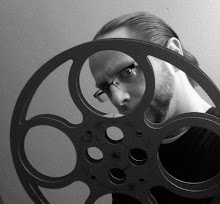
The sad and untimely passing of Steve Jobs has sparked many a remembrance this week; remembrances that recall his landmark achievements in the technology world. What is often overlooked is his contribution to the film industry; perhaps one of the largest and important contributions in the past 20 years. You may have heard of it; they call it Pixar Animation Studios.
Pixar began in 1979, known as the Graphics Group. It was part of the computer division of Lucasfilm before it was acquired by Steve Jobs in 1986. Investing his own millions in the company, Jobs and Pixar went into the computer hardware business. Its core product was the Pixar Image Computer, which was sold primarily to government agencies and the medical community. It was also used by Disney to improve their 2D hand-drawn animation films.
Sales for Pixar’s hardware were poor, so the company focused more on its animation department. In 1990, Jobs made the gutsy move of selling off the hardware division and putting Pixar into the movie business full-time. A deal with Disney was struck to produce three computer-animated films, with the first being TOY STORY in 1995. The rest, as they say, is history.
To date, Pixar’s twelve films have grossed an estimated $6.3 billion worldwide, and have won a total of 26 Academy Awards. But Jobs and Pixar’s stamp on the business goes beyond the green and the gold. Whether they intended to or not, the new computer-animation process obliterated the old, 2D hand-drawn animated film. It also inspired other companies like DreamWorks who went on to produce the SHREK franchise. In 2001, the Academy of Motion Picture Arts and Sciences, recognizing the growing world of animated films, added a new category; Best Animated Film. A category that Pixar would dominate over the next decade.
Pixar’s films succeed because of excellent writing; writing that spawns simple and familiar stories in a fresh and fun manner. While Jobs likely never wrote one word in a screenplay, it was his business sense that kept Pixar functioning better than an iPod. It was a bold move for him to put Pixar into the untested waters of full-time computer-animated films, but he believed in it. It’s that type of faith that he put into everything he did.


No comments:
Post a Comment
A few rules:
1. Personal attacks not tolerated.
2. Haters welcome, if you can justify it.
3. Swearing is goddamn OK.